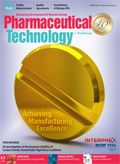Key Considerations in Capsule Filling
Capsule filling is a complex process, and the product to be encapsulated must be well developed to ensure mass uniformity.
rawf8/shutterstock.com

Iñaki Bueno, formulation and manufacturing manager at Idifarma, and Rob Harris, chief technical officer at Juniper Pharma Services, share insights on the challenges of capsule filling.
PharmTech: What type of formulations are filled in a capsule? What formulations are not suitable for capsule filling?
Bueno (Idifarma): In principle, any type of formulation may be dosed into hard capsules, from blends or granules, to coated pellets, to other oral dosage forms such as tablets, micro-tablets, smaller capsules, including various combinations of any of the mentioned forms. It is also possible to fill liquids, provided that the material of the capsule (generally gelatin, although there are other alternatives) is not soluble in the solvent used in the formulation.
Due to the need for a plasticizer in the capsule shell formulation, conventional hard gelatin capsules have a high water content (13-16%). For this reason, hygroscopic products can absorb moisture from the capsule, causing the capsules to become brittle, which can break under mechanical stress. On the other hand, such transfer of moisture to the contents of the capsule could generate problems of physical stability (crystalline form) or chemical stability of the API.
To solve these problems, capsules with a low moisture content can be developed, either by using plasticizers other than water or other polymers, such as hydroxypropyl methylcellulose (HPMC), which is the most widespread alternative.
Finally, mixtures with materials containing reactive aldehydes are not suitable for capsule filling, as they favor the “cross-linking” effect experienced by the gelatin, reducing the capsule’s solubility.
Harris (Juniper): It is possible to fill powders, granules, non-aqueous liquids, non-aqueous gels, and thermo-setting formulations into capsules. For solids, powders with poor flow properties can be problematic because of poor fill weight control. Liquids with very low viscosity can leak from two-piece shells soon after filling. Hygroscopic liquids can cause embrittlement in capsule shells.
Capsule size and fill weight
PharmTech: How do you decide on capsule size and fill weight per capsule?
Harris (Juniper): The choice of capsule size and fill weight is dictated by the unit dose requirements and the formulation to be used.
Bueno (Idifarma): Once the formula of the contents of the capsule is developed and the weight to be dosed is known, it is easy to define the most appropriate capsule size. The body of each size of capsule has a defined volume; and by knowing the density of the mixture to fill, we can establish the volume that will occupy the weight that must be filled in each capsule. In the case of mixtures (powder or granulate), knowing the tapped density makes it possible to determine the most suitable capsule size. For pellets or micro-tablets, where there is no possibility of compaction, it is necessary to use bulk density instead. All capsule suppliers provide capsule size tables that facilitate the choice of capsule size.
Clinical vs. commercial production
PharmTech: How is capsule filling for clinical studies different from that for commercial production?
Bueno (Idifarma): Capsule filling provides great potential for clinical trials, whether it’s filling just the API for first preclinical or clinical trials to filling other dosage forms in capsules (tablets or smaller-sized capsules, for instance) for blind or double-blind clinical trials. Capsules intended for clinical trials often have different geometries or dimensions from the capsules used in production, and therefore, might require specific machine formats. Typically, the batch sizes for clinical trials are smaller than for commercial production, so in many cases, it is possible to fill capsules manually.
Harris (Juniper): For small numbers of capsules for clinical studies, it may be feasible to hand-fill capsules, either with neat drug or with a simple powder blend, or use a precision powder dispenser, such as the Xcelodose (Capsugel). Another approach for relatively small numbers of capsules is to ‘flush-fill,’ which involves holding an array of opened capsule bodies in a perspex frame and adding/spreading out the drug or formulation across the capsule shells to fill them all to the brim, followed by adding the caps and closing the capsules. Difficult to handle powders (e.g., micronized drug, poor flow powders) can be filled into capsules either by hand-filling or by flush-filling (although due consideration should be given to the quantities of capsules required).
For larger clinical trials, automation becomes important. For a batch size greater than a few thousand capsules, an automated filling approach is required, which demands the use of a suitable, free-flowing powder blend or granular formulation.
For commercial production of capsule products, speed and ease of manufacture is important and, therefore, automated capsule filling machines are used. There are two types of automated capsule filling machine-the dosator-type and the dosing disc type.
Challenges in capsule filling
PharmTech: What are the challenges of capsule filling for liquid and powder formulations?
Harris (Juniper): For liquid formulations, very low viscosity liquids should be avoided due to the potential for leakage. For powder formulations, good flow properties are important to ensure satisfactory fill weight control.
Bueno (Idifarma): The main challenge when filling liquids in hard gelatin capsules is to find the right solvent (i.e., one that does not interact with the capsule material). From a technological standpoint, the capsule filling machine requires a specific station to fill liquids, and the capsules must undergo an additional subsequent band-sealing process to prevent leakage of the contents of the capsule.
As far as powder filling is concerned, the main challenge is to achieve a formulation with good flow properties, which guarantees the correct filling of the dosing systems, and therefore, a good uniformity of mass of the contents of the capsule.
PharmTech: Can you discuss the differences between manual and automated capsule filling, and the pros and cons of each method?
Bueno (Idifarma): Unlike an automatic filling machine, where there is a transfer of the product to the capsule, the manual filling of powder is done volumetrically. This implies that the whole body of the capsule must be filled. Changes in API or final blend density may make it impossible to fill the exact amount of blend. In cases where the density is lower, it is possible to use manual compaction systems, but they are ineffective and introduce a high variability to the contents of the capsule.
Obviously, the main advantage of manual encapsulation is that the investments in equipment and formats are much lower and that the times dedicated to associated activities, such as adjustment and cleaning, are drastically reduced. Another advantage of manual filling is that there is no dead volume, which makes it possible to encapsulate all the powder, something that is really useful when manufacturing very small batches for clinical trials or conducting formulation tests.
Speed, reliability, and the ability to adjust the dose are the main advantages of automatic machines. Its main disadvantages include the need to invest in expensive equipment, the longer time needed to perform adjustments to the batch, format changes and cleaning, and the need to manufacture bigger batch sizes compared with manual filling.
Things that can go wrong
PharmTech: What are the common things that can go wrong in capsule filling that manufacturers should be aware of?
Harris (Juniper): When powder filling, the main challenge is poor capsule fill weight control. When filling liquid or semi-solid formulations, splashing of the liquid during the capsule filling can occur, making it necessary to reduce machine output speed or increase time for the pump stroke. In addition, ‘tailing’ during filling stroke for gels and semi-solids can lead to variable fill weights and contamination of capsules, making it necessary to adjust the speed of the pump stroke and/or increase the temperature of the formulation during filling.
Bueno (Idifarma): Capsule filling is a complex process, so there may be numerous challenges. It is important that the product to be encapsulated is well developed, with an acceptable flow and a reproducible batch-to-batch density to avoid problems of mass uniformity.
In addition, an automatic encapsulating machine is a complex equipment. Each capsule format is composed of numerous pieces, which must be perfectly aligned and adjusted to avoid the opening or breaking of capsules. When capsules are broken, they can release their contents, staining the entire batch produced.
Finally, hard gelatin capsules eventually undergo a cross-linking reaction that renders the gelatin less soluble and may affect the release of the capsule contents.
Article Details
Pharmaceutical Technology
Vol. 41, No. 3
March 2017
Pages: 30–34
Citation
When referring to this article, please cite it as A. Siew, "Key Considerations in Capsule Filling," Pharmaceutical Technology 41 (3) p. 30–34, 2017.

Pharmaceutical Tariffs Are Imminent: How Industry is Bracing for Impact
April 16th 2025On April 14, 2025, the Trump Administration launched a national security-driven investigation into pharmaceuticals, a move that will likely result in tariffs being placed on pharmaceutical drugs, ingredients, and other components that are imported from outside of the United States.
Drug Solutions Podcast: A Closer Look at mRNA in Oncology and Vaccines
April 30th 2024In this episode fo the Drug Solutions Podcast, etherna’s vice-president of Technology and Innovation, Stefaan De Koker, discusses the merits and challenges of using mRNA as the foundation for therapeutics in oncology as well as for vaccines.